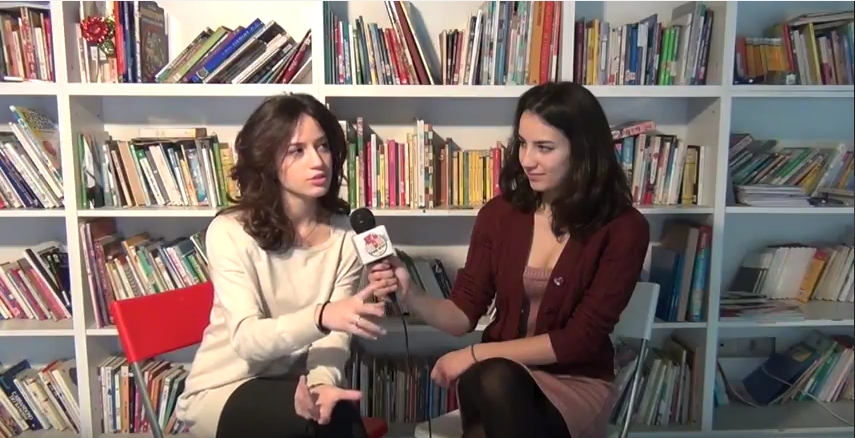
Here’s the second installment of TeenPress’ series “Giovani Creativi”, dedicated to the emerging talents of the Roman arts and culture scene. This time we are a bit outside my comfort zone, as we are exploring theater. Actress Giorgia Ferrara is born-and-bred Sicilian who moved to Rome in order to pursue her acting career. In this interview where we talk about her beginnings in the theater scene and the role art plays in her life.
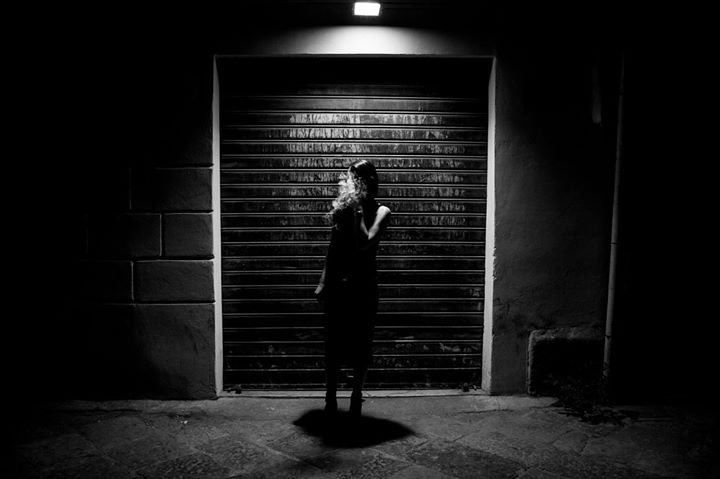
I was invited to write a short curatorial text on the work of the Palermitan photographer Ornella Mazzola for the exhibition “PALERMO DENTRO ” held at Palm Beach Hotel, Cinisi, Sicily. Ornella is a talented friend and colleague and I highly recommend to check out her website – or even better visit the exhibition, if you happen to spend these last warm weeks in Sicily. The show will be open to the public from the 19th of September to the 24th of October. Below my text in English and Italian.
ORNELLA MAZZOLA
“Palermo Dentro”
Are the people making the places, ore the places making the people? In the series Palermo Inside by Ornella Mazzola, we go back to the chicken and egg paradox. There is no right of way, because people and places become inextricably linked. For the inhabitants of the most working class neighbourhoods in the city’s historic center – Kalsa, Albergheria, Borgo vecchio, Vucciria, Ballarò and La Marina – boldness fights with resignation. The People is actually made up of a myriad of stories that intersect, while maintaining their singularity. You see that in a gesture of woman, maybe aggressive, perhaps reluctant. In solitary play of children in silent spaces. In the foosball on a sultry summer afternoon. Ornella is able to crystallize a series of habits that constitute the soul of the city as much as their own buildings. Here human beings shows themselves in their theatricality. The city is a stage from which mysterious figures emerge, like a premonition. In the end, what everything comes down to is that you can take the people out of Palermo, but you can’t take Palermo out of the people.
Read More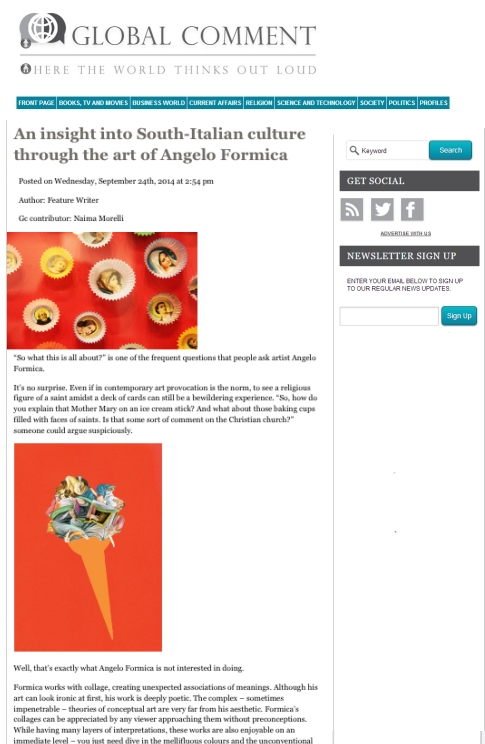
My article “An insight into South-Italian culture through the art of Angelo Formica” has just been published on the web magazine Global Comment.
This is my second article for this web-magazine. What I’m aiming at with this long-winded articles is to show how contemporary art can be an invaluable tool to investigate topical issues of modern society with a global perspective.
Here’s the link to the article
Read More
In October I went to Sicily for the first time and I didn’t miss the opportunity to visit the stunning Palermo.
I had two wonderful guides to show me around, Maria Rita Mastropaolo, writer for the web magazine Prisky (link), and Ciro Cangialosi, an incredible comic books artist (link).
We visited Palazzo Riso, an ancient building turned into Contemporary Art Museum, which displayed works by the most important contemporary Sicilian artist, like Carla Accardi, Pietro Consagra, Salvo, Antonio Sanfilippo, Emilio Isgro’ and also younger Sicilian artists such as Croce Taravella, Alessandro Bazan and Laboratorio Saccardi.
There was a Boltanski’s exhibition going on that was quite impressive. It was related to memory and in some way to a profound sensation of human tragedy, like most of his work. The clothes hanging from the wall and surrounded by lights seemed to be presences that were no more into the body, but they were flowing around what was left of the body itself.
Read More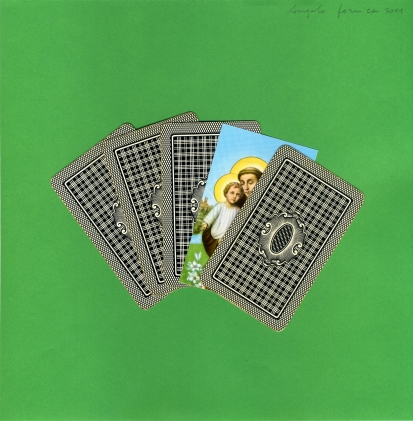
In the chaos of an art fair is usually quite difficult to find some art work that attracts you straightaway. So was at the Roma Road to Contemporary Art Fair at MACRO Testaccio.
Actually, there was an exception.
Coming from Sorrento, a picturesque town near Naples, I was quite influenced by all the traditions, all the sort of stuff coming from people. The “Popolo”.
I never stop questioning about it. What is the Popolo? Does the Popolo really exist nowadays? What are the features of the Popolo?
From Jorge Amado to Pasolini, I enjoy the subject, that eventually became the topic of my thesis at the Academy of Fine Arts.
There’s one thing that a particularly like about the Popolo. It is how they mix the religion and the sacred with everyday life and how they show it through the objects.
Angelo Formica, the exception in the art fair I was talking about, takes this concept to the extreme with his artworks.
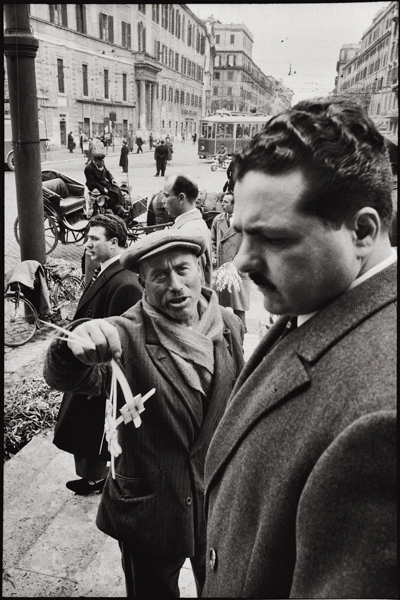
The Museo di Roma in Trastevere represents, in the city of Rome, the only museum opened to photography in the true sense of the word.
Often you can find there interesting exhibitions on American photographers, like the unforgettable one on Stephen Shore.
These kinds of shows lead the roman audience to a certain vision of photography that is less renowned in Rome, and opens new dialogue possibilities between the city and the subject of the exhibition.
This was the case of Leonard Freed, the famous Magnum photographer.
It was Magnum that starts a weird combination between art and documentary photography, and Leonard Freed was one of them who followed the idea that a snapshot can be interesting, pushing the idea of spontaneity.
It seemed that Leonard had a predilection for Italy. From there the title “Io amo l’Italia”, an exaggerated declaration of love not to be suspected.
Indeed, people came called by Freed’s celebrity, finding something maybe below the level of the photographer’s serious work.
You know, it’s from 2006 that Leonard has been dead, so we can’t absolutely blame him for this exhibition.
Maybe he even hates Italy and he was forced to come. Maybe one time, just one time, he said, to make an Italian friend happy “Iow Aemoh leh’eetalia” with an odd American accent, and the newpapers reports this quote and unfortunately the curator of the exhibition read it and he said “Ok, let’s make an exhibition on Freed’s Italian photos”
So we can’t blame Leonard, really.
We could rather blame the curator, who had to place the photographs he wants to show in the context. That would mean as the context of Italy (and that’s ok) either the modern sensibility of the watcher (and that doesn’t work).



